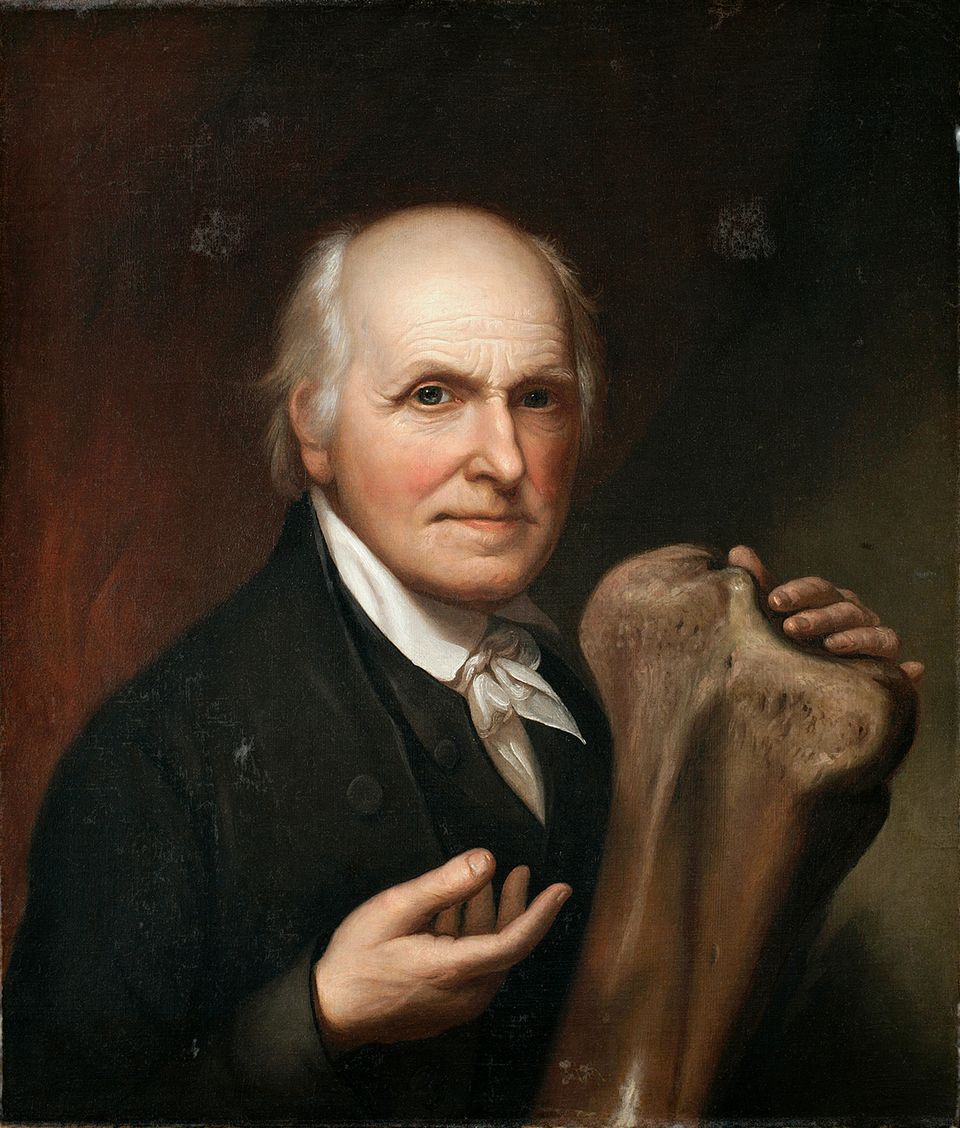
Charles Willson Peale, Self-Portrait with Mastodon Bone, 1824, oil on canvas, 26 1/4 x 22 in., New-York Historical Society, Purchase, James B. Wilbur Fund, Photography ©New-York Historical Society, negative #8736c.
About this Artwork
In this late self-portrait, the elder Peale gestures to the femur of a mastodon. The discovery of the mastodon had been Peale’s inspiration to expand his museum and the complete skeleton was his prize attraction. The femur held special meaning: it was the index bone that allowed one to estimate the overall size of the animal. Like Humboldt’s barometer, it represented what Peale cherished most: the ability to use parts of nature to take the measure of the whole. Here it suggests the summation of Peale’s life as an artist, scientist, and museum founder. Peale had hoped that his museum might become a national insti- tute; however, it would be James Smithson’s bequest that enabled the country to establish the kind of museum complex Peale envisioned.













